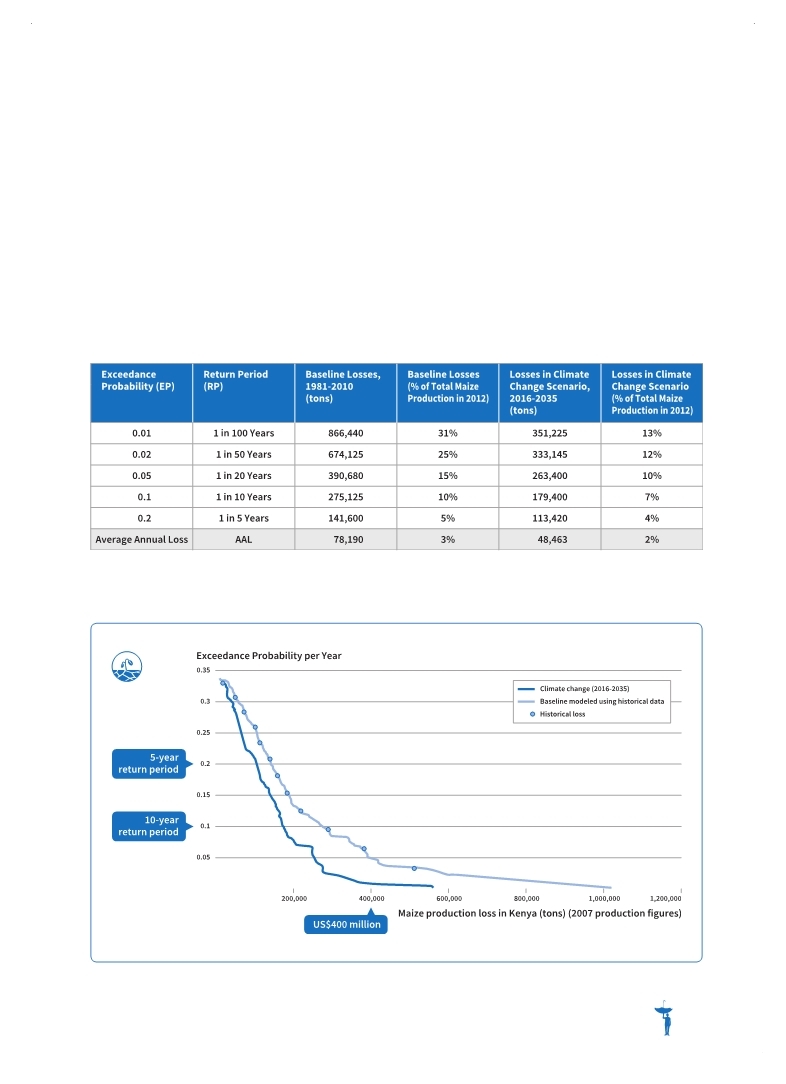 |
Global Assessment Report on Disaster Risk Reduction 2015
Making development sustainable: The future of disaster risk management |
 |
Global Assessment Report on Disaster Risk Reduction 2015
Making development sustainable: The future of disaster risk management |
|
|

87
Table 3.4 Estimated maize production losses in the Rift Valley, Kenya with and without climate change
(Source:
 Jayanthi, 2014 Jayanthi, 2014 Jayanthi, Harikishan. 2014,Assessing the agricultural drought risks for principal rainfed crops due to changing climate scenarios using satellite estimated rainfall in Africa, Background Paper prepared for the 2015 Global Assessment Report on Disaster Risk Reduction.. Jayanthi, Harikishan. 2014,Assessing the agricultural drought risks for principal rainfed crops due to changing climate scenarios using satellite estimated rainfall in Africa, Background Paper prepared for the 2015 Global Assessment Report on Disaster Risk Reduction.. Click here to view this GAR paper. Figure 3.37 Probable losses in maize production in the Rift Valley, Kenya with and without climate change
(Source:
 Jayanthi, 2014 Jayanthi, 2014 Jayanthi, Harikishan. 2014,Assessing the agricultural drought risks for principal rainfed crops due to changing climate scenarios using satellite estimated rainfall in Africa, Background Paper prepared for the 2015 Global Assessment Report on Disaster Risk Reduction.. Jayanthi, Harikishan. 2014,Assessing the agricultural drought risks for principal rainfed crops due to changing climate scenarios using satellite estimated rainfall in Africa, Background Paper prepared for the 2015 Global Assessment Report on Disaster Risk Reduction.. Click here to view this GAR paper. from 866,440 tons (baseline) to 351,225 tons. The average annual loss (AAL) is thus projected to be 48,463 tons (1.78 per cent of the total maize production in the Rift Valley Province in 2012), a full 38 per cent lower than the baseline AAL of 78,190 tons (2.86 per cent of the total maize production in Rift Valley Province in 2012; see Table 3.4).
While losses due to frequent droughts (return periods shorter than 5 years) would be similar
to the observed losses for the 1981-2010 period, losses from more severe and infrequent droughts would be significantly lower (Figure 3.37). For example, a crop loss of 390,000 tons with a current probability of 1 in 20 years would have an occurrence probability of 1 in 100 years under the near-term climate change scenario.
|
 
Page 1Page 10Page 20Page 30Page 40Page 50Page 60Page 70Page 77Page 78Page 79Page 80Page 81Page 82Page 83Page 84Page 85Page 86Page 87Page 88->Page 89Page 90Page 91Page 92Page 93Page 94Page 95Page 96Page 97Page 98Page 99Page 100Page 101Page 110Page 120Page 130Page 140Page 150Page 160Page 170Page 180Page 190Page 200Page 210Page 220Page 230Page 240Page 250Page 260Page 270Page 280Page 290Page 300Page 310
|
|
 
|
 
|
